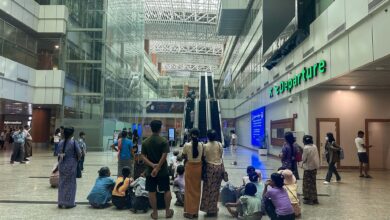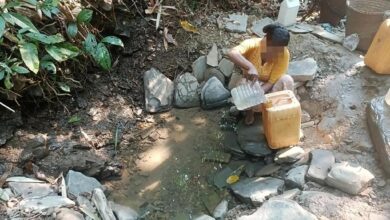
PINLAUNG, Shan State — Visitors to Pinlaung, a hilly town perched 1,500 metres above sea level in the Pa-O Self-Administered Zone of southern Shan State, are greeted with the scent of tealeaves.
The town, with its mixed ethnic Pa-O and Shan population, and its surroundings account for the largest area of tea cultivation in southern Shan State, and its shops are full of dried or pickled leaves.
Sai Pon, who claims to have grown tea locally for close to 50 years, said recent tweaks in production methods have allowed for higher incomes with less work.
“In the old days, the whole family had to contribute. New methods have saved time and improved the quality of tealeaves,” said Sai Pon, who lives in Koe Khaung ward.
Koe Khaung was once a village before it joined the municipality. There is nationwide demand for its excellent tea, known as “Pinlaung-Koekhaung.”
Sai Pon and other local growers said a more “systematic” approach, from harvesting to packaging, and closer attention to cleanliness, had upped quality further.
According to Pinlaung Township’s agriculture department, tea plantations cover 12,000 acres. Around half of it is clustered around a higher-elevation village called Le Hlaung, 10 miles from Pinlaung town.
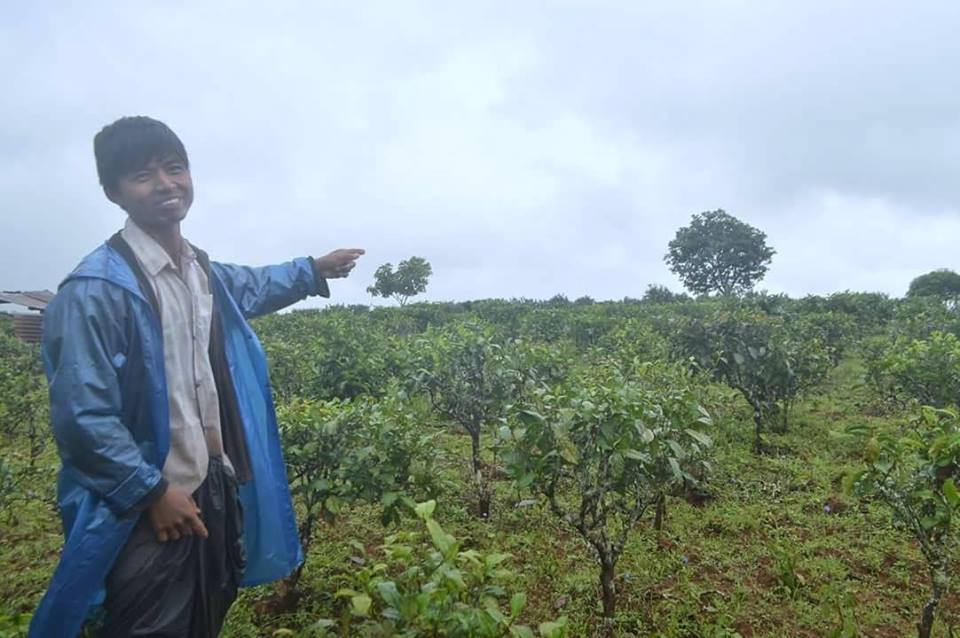
Harvest time
Tea, a perennial crop, comes in four species, with origins respectively in China, Assam in northeast India, Indochina, and Kokang in Myanmar’s northern Shan State on the border with China. In Myanmar, mainly Assam leaves are cultivated.
In Pinlaung, as across the northeastern Shan highlands, tea is best harvested during the months of Dabodwe and Dabaung (roughly from February to early March), between Shan State’s chilly cool season and the onset of the hot season, when the climate is dry.
According to the traditional method, once plucked, the leaves are roasted in a deep pan, taken out and kneaded, and then left out to dry in the sun.
But, in recent years, local farmers’ groups and the township agriculture department have been educating farmers on improved branch cutting and plant protection methods, according to U Myint Than, deputy head of the department.
Sai Pan Meng, a deputy staff officer at the department’s research plantation who claims 30 years of tea-growing experience, said, “We have to change the traditional methods to achieve better quality and get better prices.”
Preserving the plant’s height at three feet and cutting off branches at a certain ratio to induce more buds represent better practice, according to Sai Kaung Kham, the owner of a wholesale shop and the secretary of the local tea-growing association.
Traditionally, he said, “Farmers pluck the buds as well as the rough leaves when they harvest. We want this to change.”
The association has hosted workshops in more than 50 villages in Pinlaung Township between 2015 and 2018, he claimed.
Local tea growers are encouraged to use a stove with a chimney while roasting leaves, to avoid them being spoiled by smoke, and to sundry the leaves on a raised shelf.
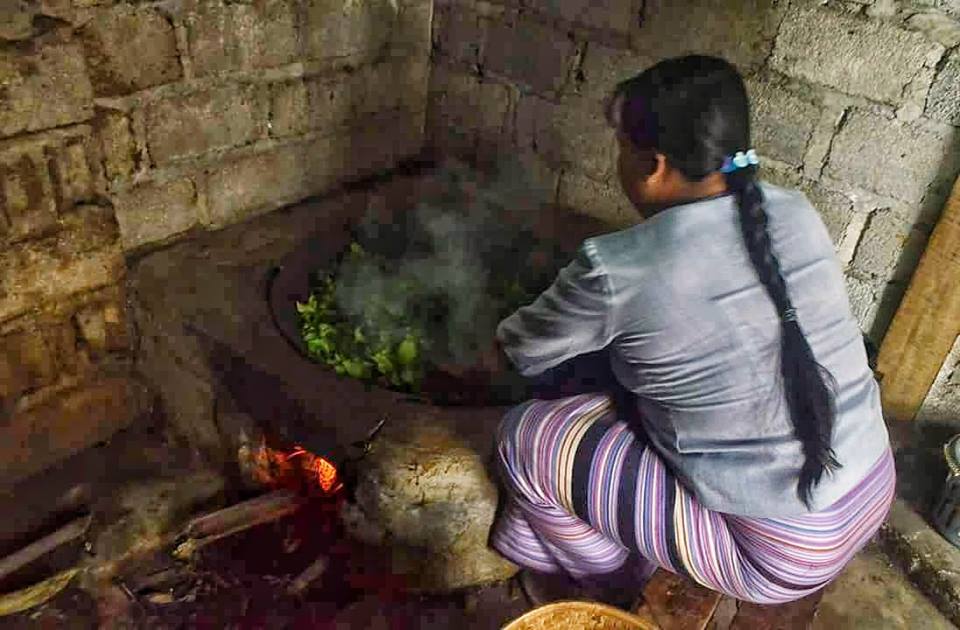
Koe Khaung ward, the former village with the famous tea, is ahead of other areas in updating the production process. Its roughly 100 tea-producing households use stoves with chimneys and clean pans for roasting.
Consequently, its tea fetches the highest prices. A viss (1.63kg) of tea commonly fetches 3,800-4,000 kyats but Koe Khaung leaves sell for around 6,000 a viss (US$4.25).
Lwepya village is similarly advanced, using iron pots with lids for roasting rather than open round pans, from where a lot of heat escapes. Lwepya local Sai Han Mwe said using the new four foot long, three foot wide pots “save time and labour. They also use less firewood and don’t give off a smoky smell.”
However, Sai Kaung Kham said there were those who had yet to adopt the new techniques and utensils.
U Tee Win of Le Hlaung village said the directive to sundry leaves on raised shelves posed space problems and entailed expense. He said rolling out a mat on the ground for temporary drying was more practical.
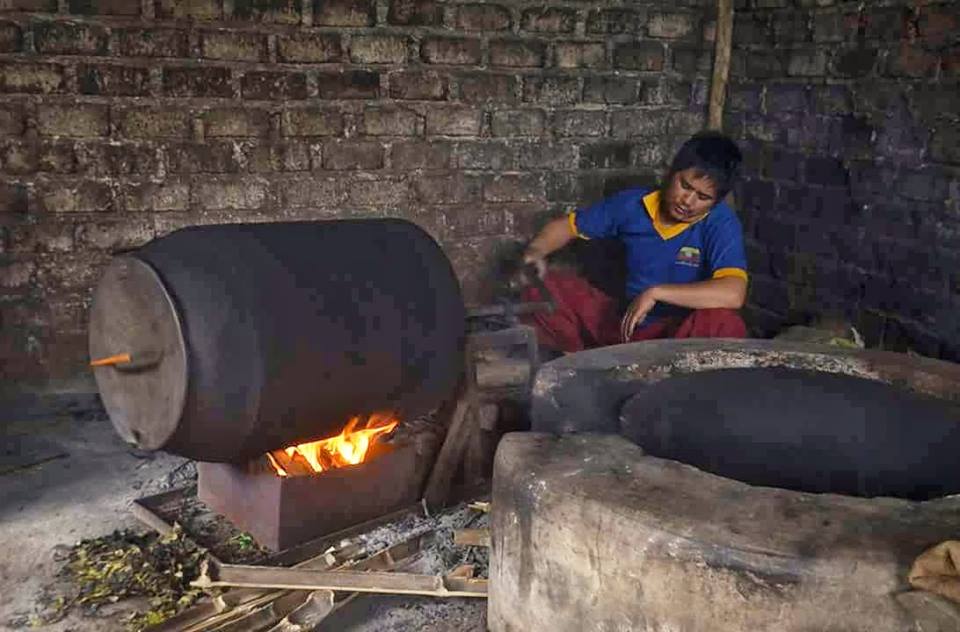
Market access
Sai Kaung Kham, who owns the Thin Pyant Hmway Tea Leaf wholesale shop, said Pinlaung tea was sold across central Myanmar but they had limited access to markets further afield.
“Even if we can get locals to produce better quality tea, we still need more markets to sell it at a good price,” he said.
At the major production area of Le Hlaung, most growers sell their tea leavers to buyers in the same village.
Locals say although Pinlaung grows the most tea in southern Shan State, other townships such as Pindaya and Lawksawk get more technical support from outside. “We need more organizations providing assistance,” Sai Kaung Kham said.
Locals said a Thai non-profit organization, the Mae Fah Luang Foundation, plans to come and train local farmers in more advanced methods.
Contract farming by larger commercial companies is also starting to make inroads. U Kyaw Thiha, managing director of Nara Green Tea Company, said they would target Le Hlaung village and equip farmers with new technology.
“Productivity in the village is high already and quality of produce has also improved. That’s why we’ve chosen it,” he said.

